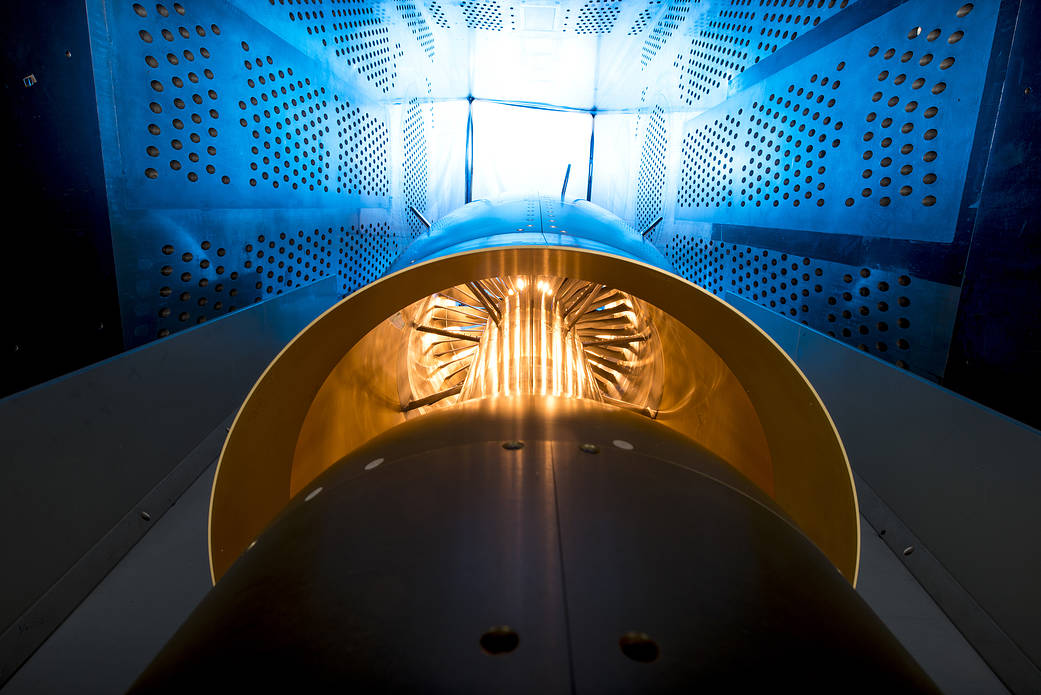In an effort to improve fuel efficiency, NASA and the aircraft industry are rethinking aircraft design. Inside the 8′ x 6′ wind tunnel at NASA Glenn, engineers recently tested a fan and inlet design, commonly called a propulsor, which could use four to eight percent less fuel than today’s advanced aircraft.
The new propulsor is designed to be embedded in the aircraft’s body, where it would ingest the slower flowing air that normally develops along an aircraft’s surface, called boundary layer, and use it to help propel the aircraft.
The tests showed that the new fan and inlet design could withstand the turbulent boundary layer airflow and increase efficiency. Results of the tests can be applied to cutting-edge aircraft designs that NASA and its partners are pursuing.



























